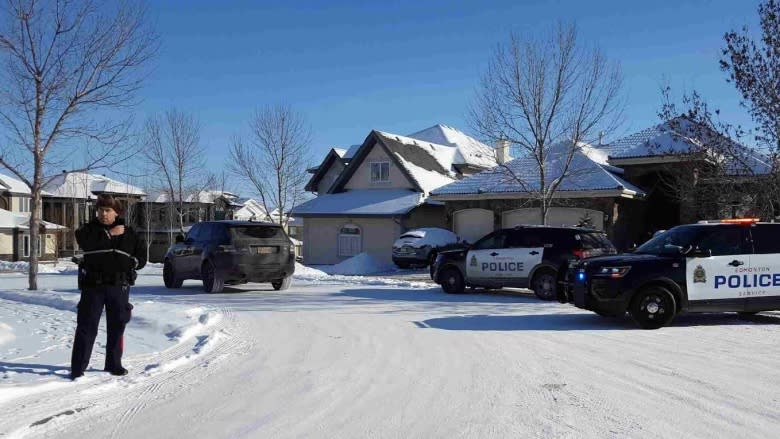Three Edmonton police officers on leave after involvement in serious shootings
Three Edmonton police officers are on administrative leave in the aftermath of two serious shootings in less than a week.
On Monday, a 10-year veteran of the force fired three times at a man wielding a rifle in an intersection in the city's northeast. The man was seriously injured, but was in stable condition in hospital Monday night.
The officer and his partner are both on mandatory administrative leave.
Five days earlier, a man who was pulled over by police in a traffic stop got out of his minivan holding a knife. The officer, a six-year veteran of the force who was working alone, shot and killed him.
That officer is also on mandatory administrative leave.
Bob Walsh, interim president of the Edmonton Police Association, said the officers need the time away from their duties to gather themselves in the wake of the trauma. While officers are trained to fire their guns, actually pulling the trigger while the firearm is pointed at another human being is very different.
"The thoughts that go through your mind, thinking you may have to pull that trigger and you may have to take someone's life," Walsh said, "it's very stressful and very strenuous. It wears very heavily on our members."
ASIRT caseload grows
The Alberta Serious Incident Response Team — or ASIRT — is now investigating both incidents, as it does with all incidents involving police officers that result in a serious injury or death.
The number of Edmonton cases the police watchdog has had to look into has climbed over the past 10 years, peaking in 2015 and 2016 at 19.
Across the province, the total number of cases ASIRT has been assigned to has increased as well, rising almost every year from 2008, when there were 21, to 2016, when there were 83.
Of those 83 cases in 2016, only four officers were charged.
Rob Creaser, a retired RCMP officer, knows firsthand how quickly a situation can escalate. Twenty-six years ago, while he was patrolling on Highway 97 on a winter's night near Monte Creek, B.C., he was shot at by a man out on a day pass from a Red Deer institution.
Instead of producing the pass from the trunk of his car, which is what the man had said he would do, he pulled a sawed-off .22-calibre rifle from his glove box and fired it at Creaser.
The officer was uninjured and dove for cover on the other side of the car.
'I had a lot of help to get me ready to do my job again'
Creaser said he was prepared to take the man's life that night, but the circumstance didn't present that way.
"I made so many mistakes that night that could have cost me my life. I'm right-handed. I had a flashlight in my right hand. I couldn't have gone for my weapon even if I wanted to," he said.
"If you're faced with deadly force, you have to respond accordingly."
That officers are trained to shoot at people's limbs "in an emotionally charged event like that" is a misconception, Creaser said.
"If you were to aim for a limb, like a leg or a hand, chances are you'd miss. You're always taught to train for centre of mass, which is you know, the chest area. Chances are the people who aim there don't hit there anyway," he said.
In the aftermath, Creaser was diagnosed with post-traumatic stress disorder.
"It was a traffic stop, which they say is a routine matter, but really it's not," said Creaser, who went through counselling to deal with the matter.
"It'll be a split-second decision which our members have to make in relation to preserving life or unfortunately taking a life," Walsh said.
roberta.bell@cbc.ca
@roberta__bell



